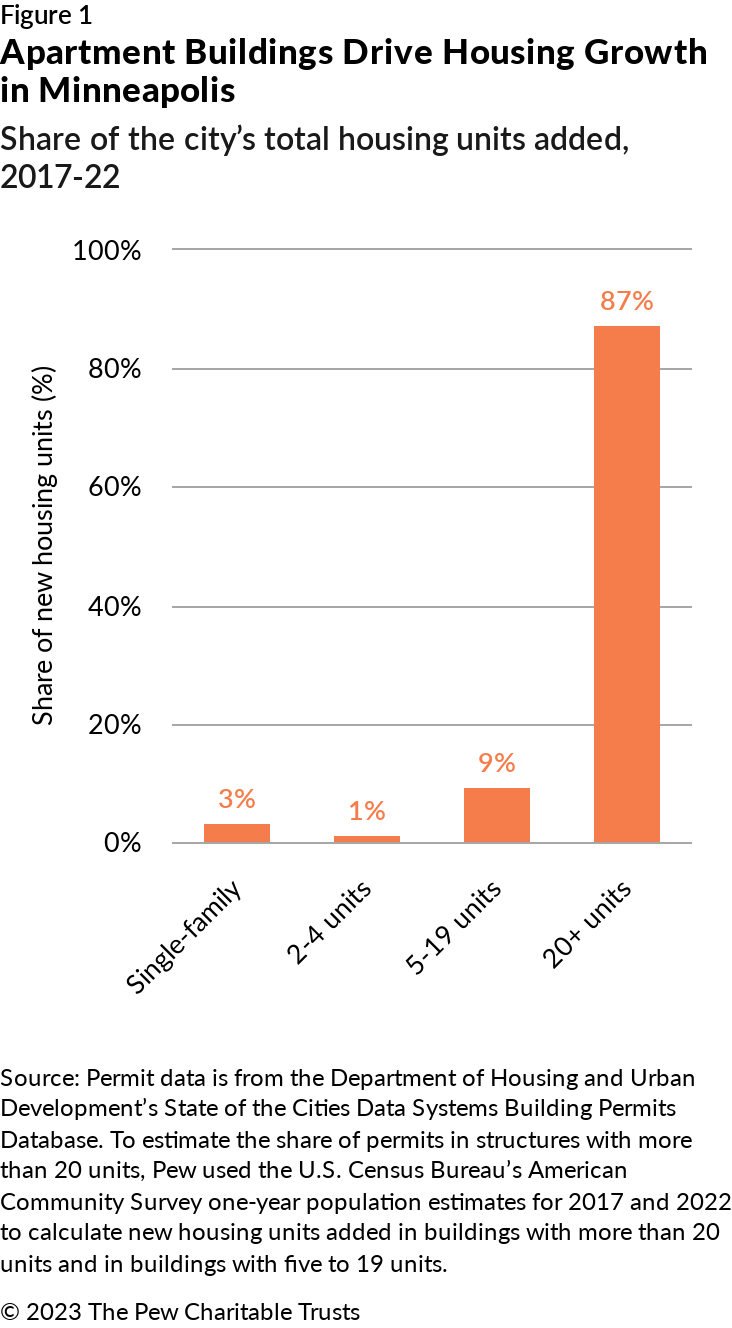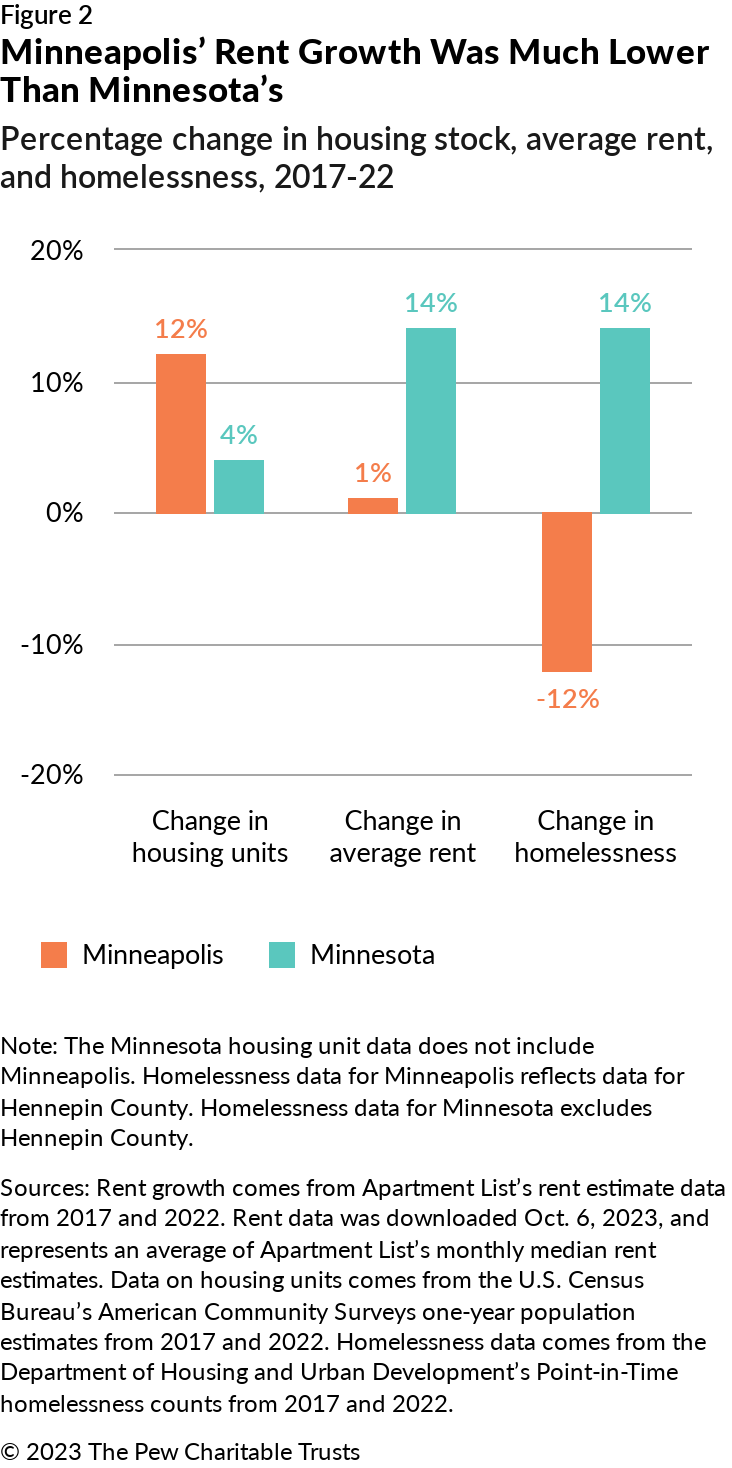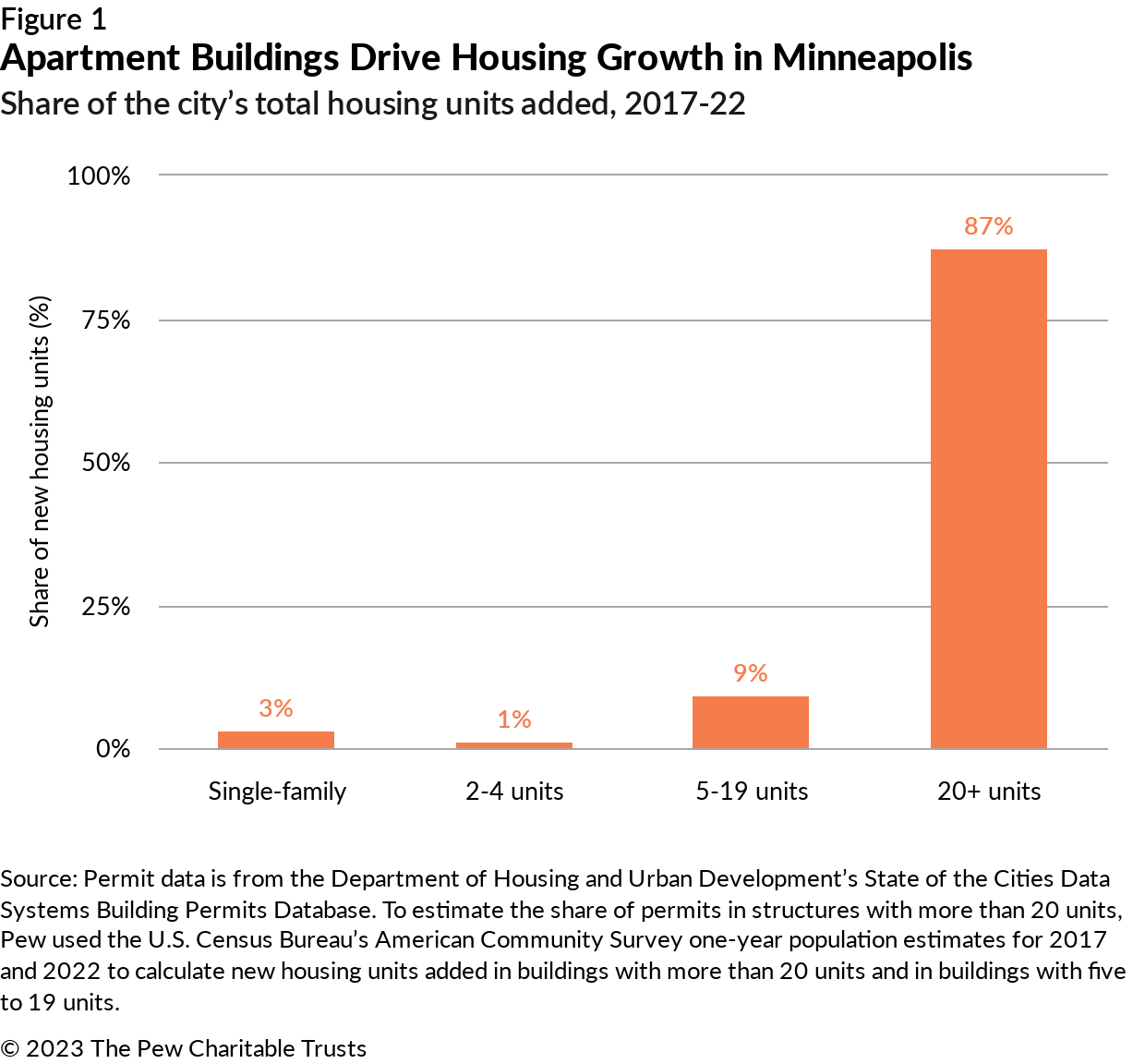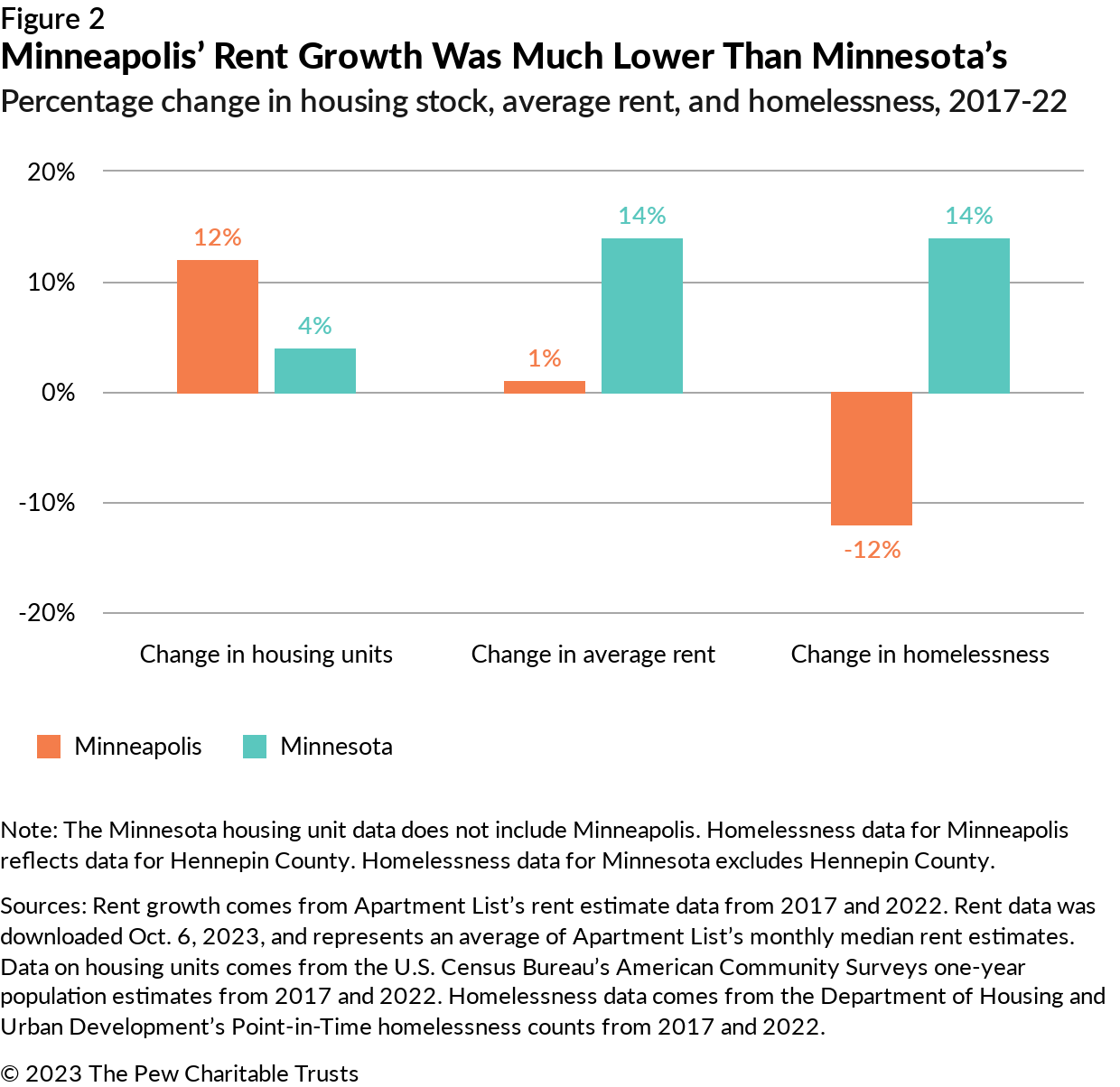Minneapolis Land Use Reforms Offer a Blueprint for Housing Affordability
Rents stayed flat as more apartments were built, even as the rest of Minnesota saw increases

Minneapolis was once among the cities whose zoning policies prevented sufficient housing construction. In the early 2000s, the city maintained strict requirements related to parking, land use, and building height, width, and bulk. Then rising housing costs prompted policymakers to rethink their zoning rules.
Starting in 2009, the city enacted a series of policy changes that reduced and then eliminated minimum parking requirements, allowed construction of accessory dwelling units, and lowered minimum lot size requirements in residential zones, all with the goal of encouraging the construction of more housing. These changes culminated in Minneapolis 2040, a comprehensive plan that took effect in 2020 and codified the city’s commitment to expanding its housing supply, especially near commerce and transit.
Communities nationwide face housing dynamics similar to those in Minneapolis. Because of a record low number of available housing units, rents and home prices have soared in recent years. This shortage exists in nearly every state. In fact, housing underproduction has been worsening in nearly 75% of the country’s metropolitan areas. Much of the problem can be linked to overly restrictive zoning codes, which often prevent new housing development in areas that have good access to jobs and other amenities. Research shows that communities with strict zoning requirements tend to have higher home prices, rent growth, and levels of homelessness than those with more permissive zoning laws.
Policymakers in other cities can learn from Minneapolis’ experience in implementing land use reforms. Since 2009, policymakers in the city have enacted four major housing policies that have allowed Minneapolis to expand its housing supply. In recent years, leaders have acted to:
- Eliminate minimum parking requirements for new developments. Parking garages add to the cost of new residential developments. For example, one national study found that every new parking space below grade adds $50,000 in per-unit development costs. When built above ground, parking spaces are still costly and reduce the total amount of land that can be developed. In Minneapolis, policymakers have reduced parking requirements several times. In 2009, they eliminated parking minimums in downtown zoning districts. Then, in 2015, they eliminated parking minimums for buildings with 3 to 50 units near transit and reduced them by 50% for buildings with more than 50 units near transit. Finally, in 2021, all citywide parking mandates were eliminated.
- Encourage apartment development on commercial corridors. In Minneapolis 2040, the city added several zoning districts that increase the amount of housing that can be constructed near transit and along commercial corridors. The “corridor” districts permit three-to-six-story buildings along most of the city’s transit routes, while “transit” districts allow 10-to-30-story buildings on lots adjacent to light rail stations and bus rapid transit.
- Establish building height minimums in high-density zones. Throughout downtown Minneapolis and along major transit corridors, Minneapolis 2040 established minimum height requirements for new developments. Since this policy was adopted in 2020, it has helped to create more housing units in high-demand areas.
- Permit duplex and triplex construction on all residential lots. Before recent changes, duplexes and triplexes—small buildings that contain two or three housing units—were not allowed on more than half of lots in the city. Since key elements of Minneapolis 2040 took effect, such structures can be built on lots that were previously restricted to single-family housing.
Together, these policies have helped Minneapolis expand its housing supply at a faster rate than what other Midwestern cities and other parts of Minnesota have achieved. But not all of the policy changes have had the same impact. From 2017 to 2022—including some years before Minneapolis 2040 took effect but after the city cut parking requirements near transit—nearly 21,000 new units of housing were permitted in Minneapolis. Of those, Pew estimates that 87% were in buildings with 20 or more units, and just 1% were in buildings with two to four units. (See Figure 1.)

These results indicate that the city’s duplex and triplex policy has so far had a modest impact on the housing stock, while reforms promoting apartment building construction have expanded the number of available units. In part, the limited success of the duplex and triplex policy may be linked to other aspects of Minneapolis’ zoning code that make building such structures challenging, including low maximum floor-area ratios and 2.5-story height limits in the lowest-density zones. In contrast, upzoning along commercial and transit corridors and eliminating minimum parking requirements have made housing development cheaper and easier. In other places that have expanded the availability of apartments in commercial areas and eliminated parking requirements, more housing has been built and affordability has improved.
Minneapolis’ success in building new apartments has enabled the city to substantially add to its housing supply and keep rent growth low. From 2017 to 2022, Minneapolis increased its housing stock by 12% while rents grew by just 1%. Over the same period, the rest of Minnesota added only 4% to its housing stock while rents went up by 14%. (See Figure 2.) Both Minneapolis and the rest of the state experienced population growth (1% and 3%, respectively) and household growth (10% and 7%, respectively), but despite increased demand, Minneapolis was able to limit rent growth by building more housing.

These findings are in line with a robust body of research showing that jurisdictions that expand their housing supply experience slower housing cost growth than those that do not. Although some observers have worried that allowing more housing would fuel higher rents that lead to the displacement of some residents, research indicates that enabling the construction of more multifamily housing is associated with reduced displacement risk and increased racial diversity.
Indeed, census data shows that Minneapolis gained Black residents from 2017 to 2022. And, because rent growth is 13 percentage points lower than in the state as a whole, Minneapolis renters are paying an estimated $1,700 less per year than if rents had increased at the same rate as in Minnesota overall. That makes it more likely that families of modest means can remain in the city. Meanwhile, the level of homelessness in Hennepin County, which includes Minneapolis, dropped 12% from 2017 to 2022 while it rose 14% in the rest of Minnesota.
Minneapolis has shown a path to expand housing availability and tame rent growth by ensuring the availability of more homes. Policymakers’ move to allow duplexes and triplexes on lots formerly reserved for the most expensive kind of homes—single-family housing—is a step forward that has added a modest number of homes to date. Their more consequential reforms so far, however, were those that allowed more apartment buildings near transit and commerce.
Linlin Liang is a principal associate, Adam Staveski is a senior associate, and Alex Horowitz is a project director with Pew’s housing policy initiative.

















